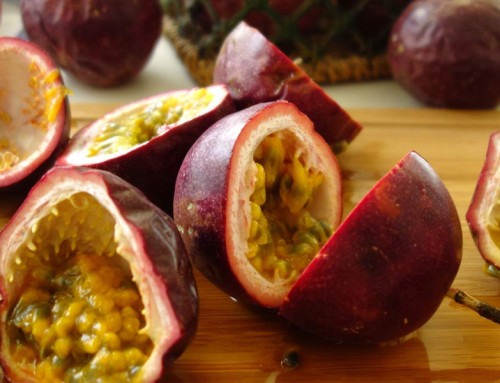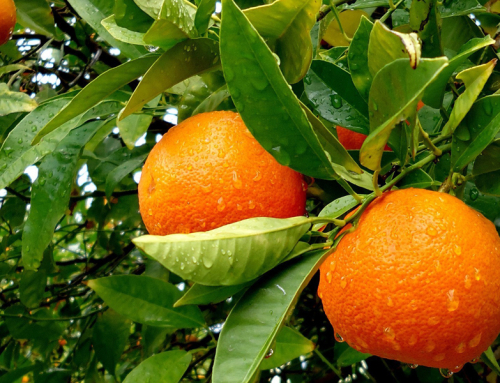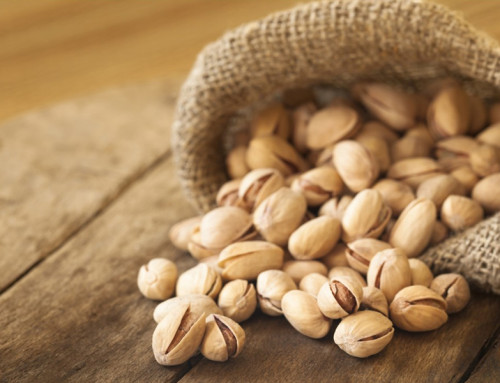Raw , without peel, membrane and seeds (approx. 3 3/4″ in diameter):
- Pink or Red, 1 grapefruit (approx. 246 g) – 74 calories
- White, 1 grapefruit (approx. 236 g) – 78 calories
Other Grapefruit Products:
- Canned Grapefruit, sections with light syrup, 1 cup (approx. 254 g) – 152 calories
- Raw Grapefruit juice, pink or white, 1 cup (approx. 247 g) – 96 calories
- Canned Grapefruit, Unsweetened, 1 cup (approx. 247 g) – 94 calories
- Canned Grapefruit, sweetened, 1 cup (approx. 250 g) – 115 calories
Grapefruit, in general, has a number of health and nutritional benefits and is a part of many weight loss diets (see “Grapefruit Diet” for more details). The following covers all the colors, and mostly the white variety (which may also be called “yellow” in some locations). “Blonde” actually refers to the Ruby Red variety below, so be sure which “white” grapefruit you may have in hand so that you get the best variety possible.
- Like other citrus fruits, grapefruit is rich in vitamin C with approximately 78% of your daily recommended allowance. vitamin C is needed for a healthy immune system, healthy gums, protecting the body’s cells from damage, building collagen, wound healing and enhancing absorption of the trace mineral iron. Vitamin C also helps to reduce inflammatory conditions such as asthma, osteoarthritis, and rheumatoid arthritis.
- Grapefruit is considered to be an excellent digestive cleanser for the urinary tract, and it promotes healthy skin.
- Grapefruit is often recommended by holistic health professionals as a liver detoxification food.
- Grapefruit contains the flavonoid, naringenin, which is responsible for the fruit’s bitter flavor. It also blocks the uptake of fatty acids that prevent the efficient use of carbohydrates. This chemical makes grapefruit excellent for weight loss.
- Grapefruit also contains the soluble dietary fiber known as pectin, that has been shown to lower cholesterol, slow the progression of hardening of the arteries, aid in digestion and may lower the risk of heart disease,. Much of the fiber found in a grapefruit is found in the pectin. Pectin forms a gel-like substance when mixed with liquid, which insoluble fiber does not do. Pectin also has been shown to have antibacterial, anti-fungal and anti-parasitic properties.
- Grapefruit juice on a regular basis helps protect against colon and lung cancer and reduces the risk of kidney stones.
- Grapefruit juice will significantly increase the activity of the liver enzymes responsible for breaking down toxins and thus allows greater excretion of toxins from the body. Since certain carcinogens are among these excreted toxins, the risk of cancer is reduced.
- A daily regime of three glasses of grapefruit juice has been shown to reduce the enzyme that activates the cancer-causing chemicals from cigarette smoking.
Pink Grapefruit
The pink variety of grapefruit contains a much higher concentration of vitamins and minerals that the white variety and have even more nutritional value than white grapefruit in several ways. They contain over 25% more vitamin A than white grapefruit and are richer in antioxidants, and they also contain lycopene. Due to these increased vitamin and mineral concentrations, you gain even MORE of the health benefits of by eating pink grapefruit instead of white.
- The combination of pink grapefruit and green tea may slow the progression of prostate cancer as well as reduce the risk of it.
- Pink and red grapefruit both contain the powerful carotenoid, lycopene, which seems to have anti-tumor properties as well as disease-fighting properties. Lycopene is responsible for the red color of some fruits and vegetables and is found abundantly in tomatoes, watermelon, papaya, guava and pink and red grapefruit. This phytochemical, in the same group as beta-carotene, has the highest amount of antioxidant action among the carotenoids and may also offer immune system benefits.
- Pink and red grapefruit is twice as effective as white grapefruit in lowering LDL cholesterol levels and preventing damage to artery walls due to the aforementioned lycopene. One half of a medium-sized pink grapefruit contains 4.9mg of lycopene.
Red Grapefruit
Ruby Red is a category of seedless grapefruit that comes from Texas. Ruby red grapefruit contains even more lycopene than the pink variety since the darker the flesh is, the more lycopene that is in it giving it that color.
- Ruby red grapefruit contains nearly 47 milligrams of vitamin C or 78 % of the RDA in a one-half fruit serving. Vitamin C supports proper functioning of the immune system.
- Both white/blond and red grapefruits have been shown to help decrease total blood cholesterol levels about the same, however, red grapefruit had a stronger effect on lowering triglyceride levels, which helps lower the risk of atherosclerosis.
- Fresh red grapefruit contains more bio-active compounds and antioxidants than white/blond grapefruit.
- Ruby red grapefruit is rich in lycopene that is highly bio-available, well-absorbed and utilized by the body.
- Lycopene has been shown to decrease prostate cancer-cell growth and even induce apoptosis, or cancer-cell death and may help protect prostate cells against further damage because it readily accumulates in prostate tissue, particularly in the prostate’s epithelial cells.
There are 4 commercial varieties of grapefruit: White, Pink, Red, and Ruby Red.
The differences between the white grapefruit and the pink/red varieties are rather minor. White grapefruits have one-third fewer calories and 3 less carbohydrates than red or pink per half fruit, but they are otherwise nutritionally equal. However, both the pink and red varieties contain higher amounts of antioxidants than the white variety. Pink and red grapefruit also contain lycopene which is not present in the white grapefruit. Only the sugar content is higher in the white grapefruit, but not by more than half a gram per half a fruit, but if you need to count calories rather than intricate nutrition points, choose the white grapefruit.
A quick comparison of the white grapefruit, listed first, against the “better” pink/red variety can be seen here in these numbers, with the basic nutrients using RDA percentages for daily consumption. Fat: 1g vs 2 g; Carbohydrates: 9.9g vs 13.1g; Fiber: 1.3g vs 2g; Protein: .8g vs .9g; Vitamin A: 1% vs 28%; Vitamin C: 65% vs 64%; Calcium: 1% vs 3%; Iron: 0% vs 1% for pink grapefruit.
Yes, you can eat your grapefruit seeds.
Have you ever noticed that when you eat a grapefruit, the only thing you tend to pluck out are the seeds? Well, you are throwing away some good nutrition by doing so. There are only about 5 seeds per fruit, and they are rather bitter, and don’t smooth out very well in the blender, but they will not harm you, and are even good for you due to their medicinal value.
Commercial grapefruit seed extract has been created that is derived from the seeds as well as the membranes (that you are also leaving behind that contain a ton more pectin!) and pulp of the fruit and is said to have antibacterial, antioxidant and anti-fungal qualities due to the naringenin that it contains. It is claimed to be able to knock out as many as 800 strains of virus and bacteria and 100 types of fungus. It has been used for treating a myriad of things, from acne to athlete’s foot, colds, strep throat and ear infections as well as being used as a natural liver detoxifier and immune system booster.
NOTE: Some drugs actually increase in potency when combined with grapefruit juice, so if you are taking prescription medicines, check with your doctor before eating any grapefruit. If you take statins, do not eat grapefruit because in severe cases, this will cause paralysis or weakness, though it is usually temporary unless muscle damage is severe.
Most people underestimate the size of the grapefruits they are eating. So in order to answer “how many calories in a grapefruit”, you need to weigh your grapefruit and go by actual weight, not by “small, medium, or large” designations.
A grapefruit is a juicy, tangy-tart tropical citrus fruit that has either white, pink or red flesh. It is actually a hybrid between a variety of sweet orange and a pomelo fruit, which is also quite sweet, and one of the largest citrus fruits, weighing between 2 to 4 pounds. This means that if you were to plant a grapefruit seed, you would not get a grapefruit tree, but either a pomelo or an orange tree, assuming the seed could grow at all, since hybrids are generally sterile and unable to reproduce. But strange things do happen, since seeds don’t read the genetics books.












